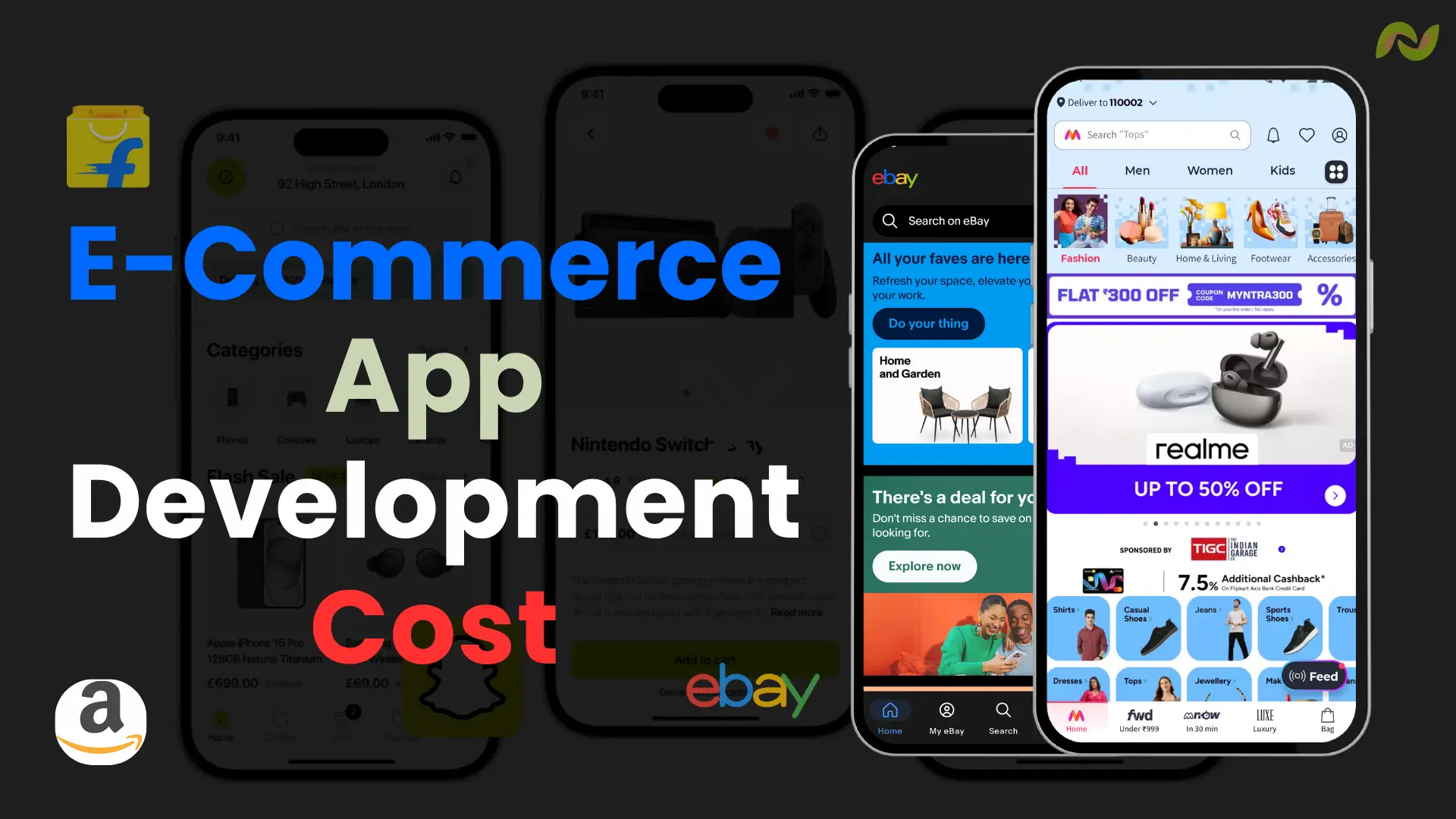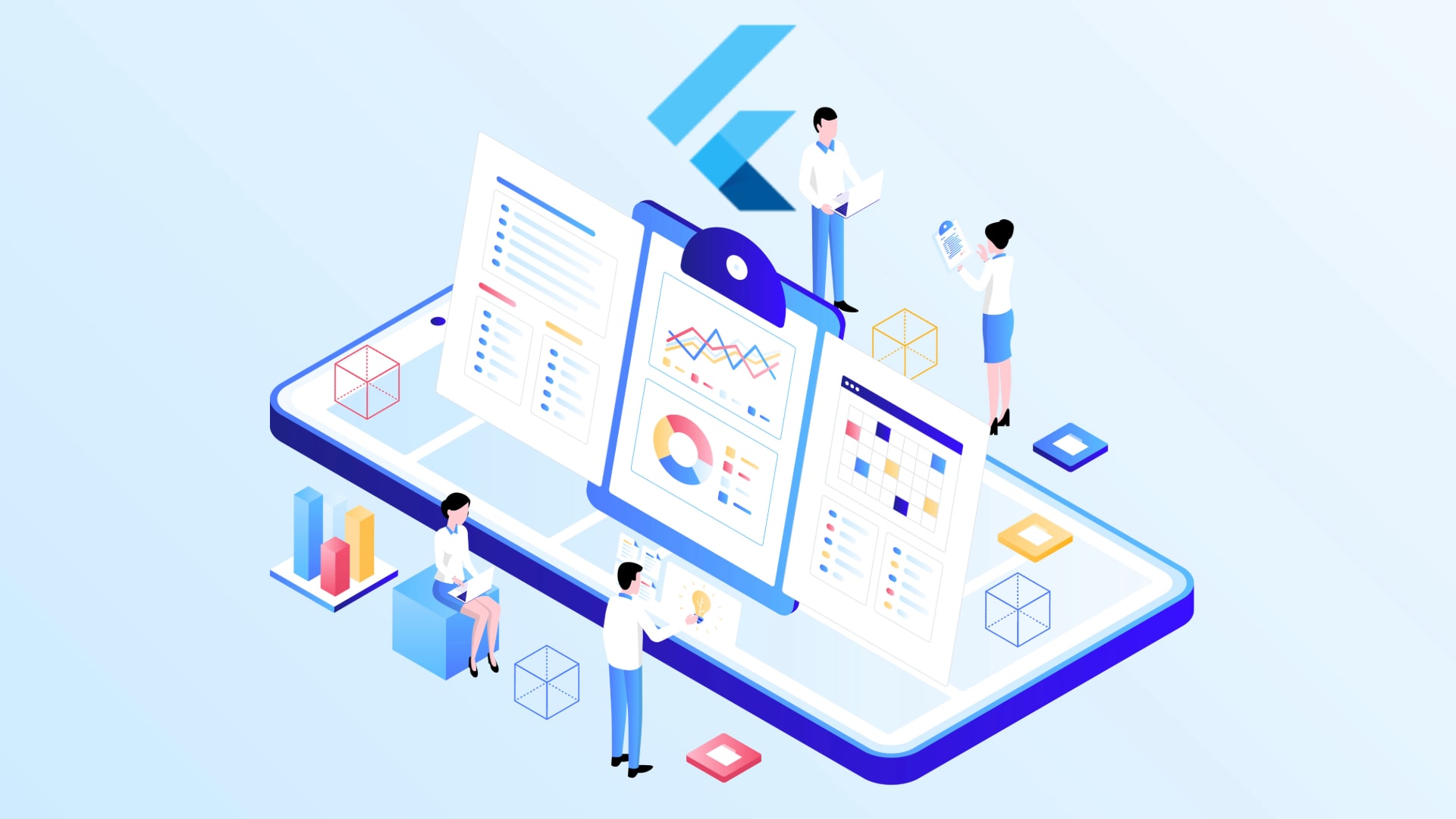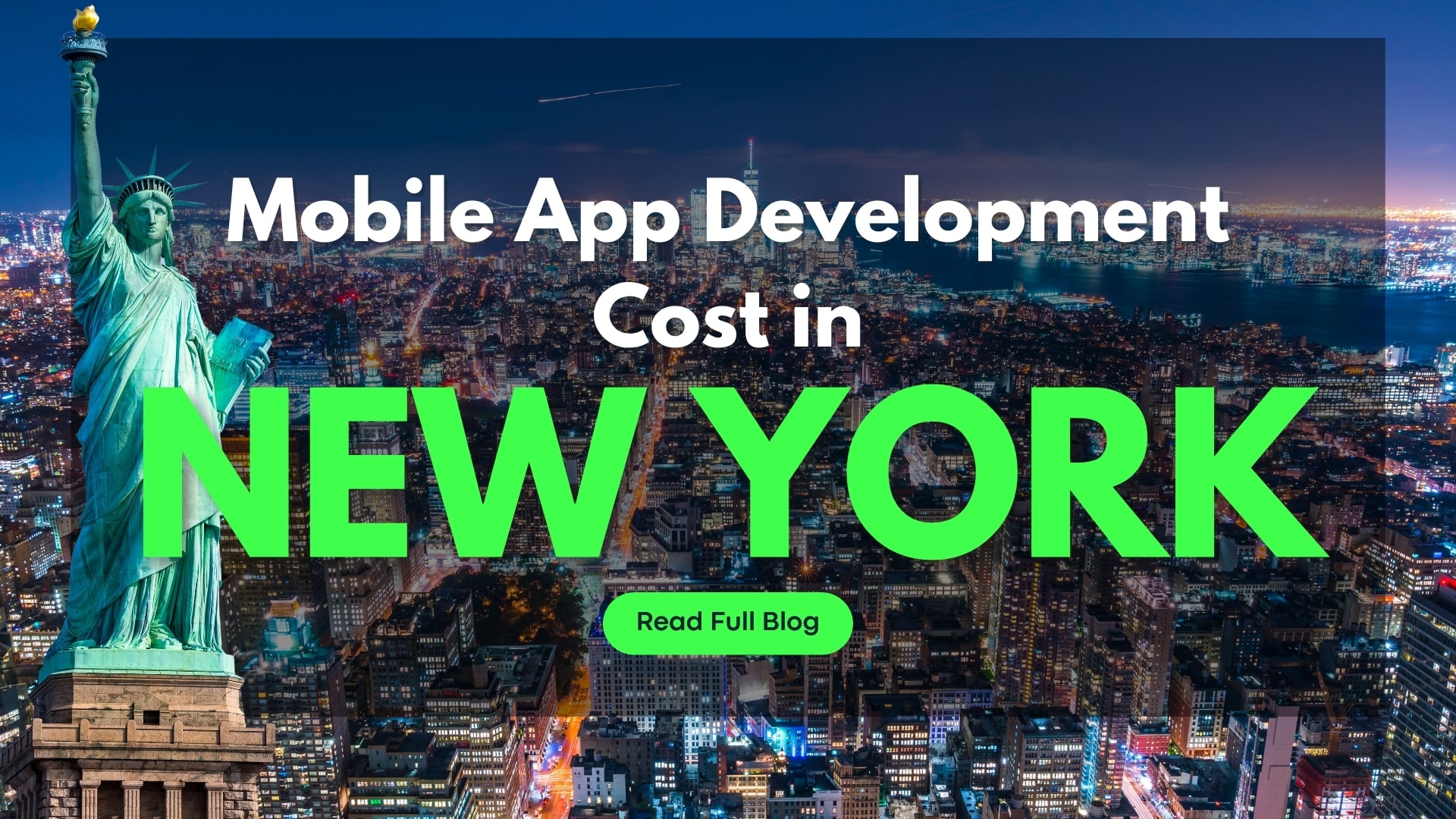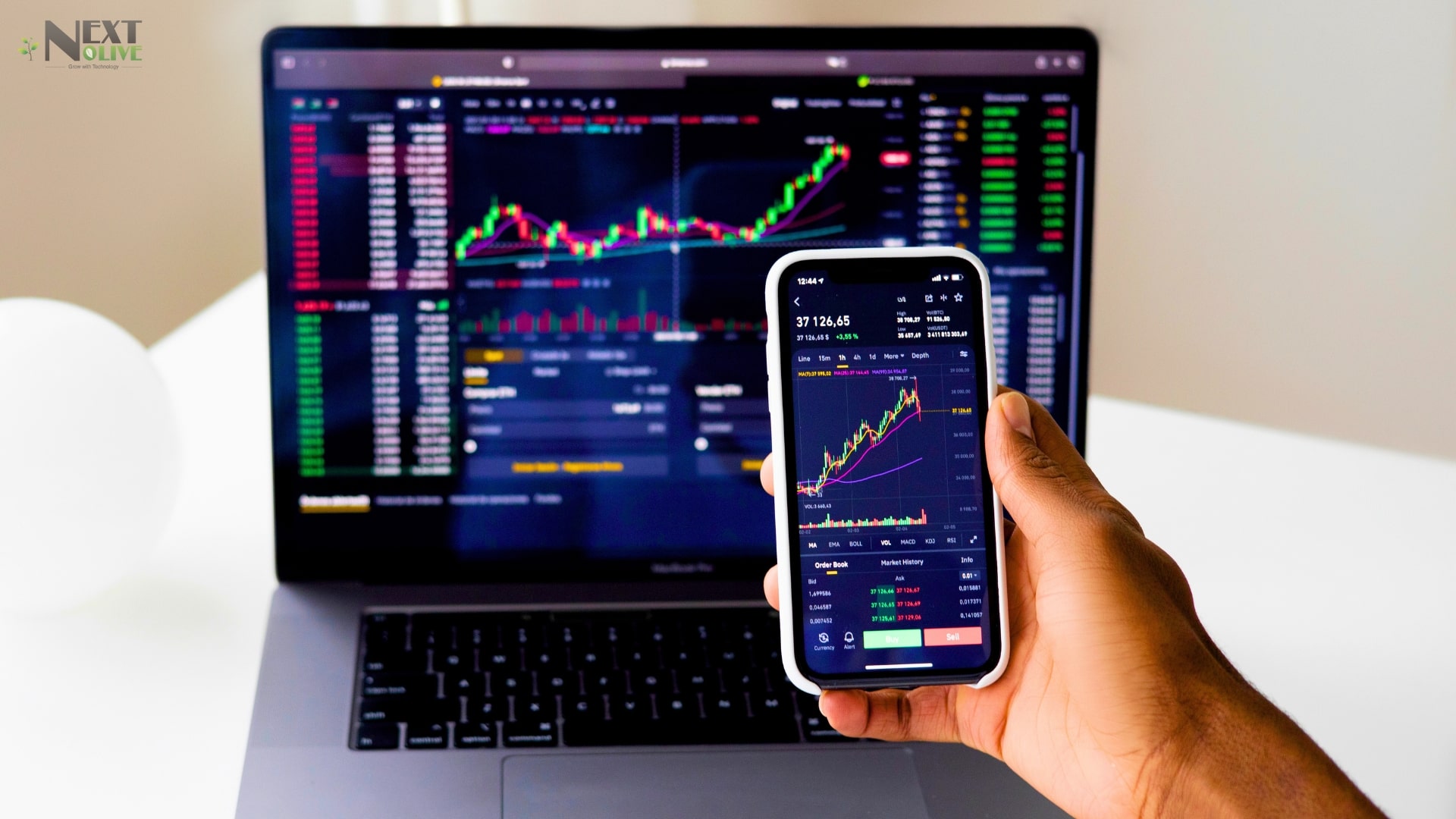How much does it cost to develop an eCommerce Application?
Developing an eCommerce application is an exciting opportunity for any business aiming to expand in the online marketplace. However, before starting the development process, it’s crucial to have a solid understanding of the involved costs. This guide aims to clarify the different factors that influence the eCommerce app development cost in 2025. From the design and functionalities to platform selection and ongoing maintenance, each component affects the total budget. Whether you’re developing a simple online marketplace or a comprehensive shopping site, understanding the financial aspects can enable you to make better and more assured choices.
Table of Contents
ToggleMarket Statistics of eCommerce Revenue Across the World in 2025
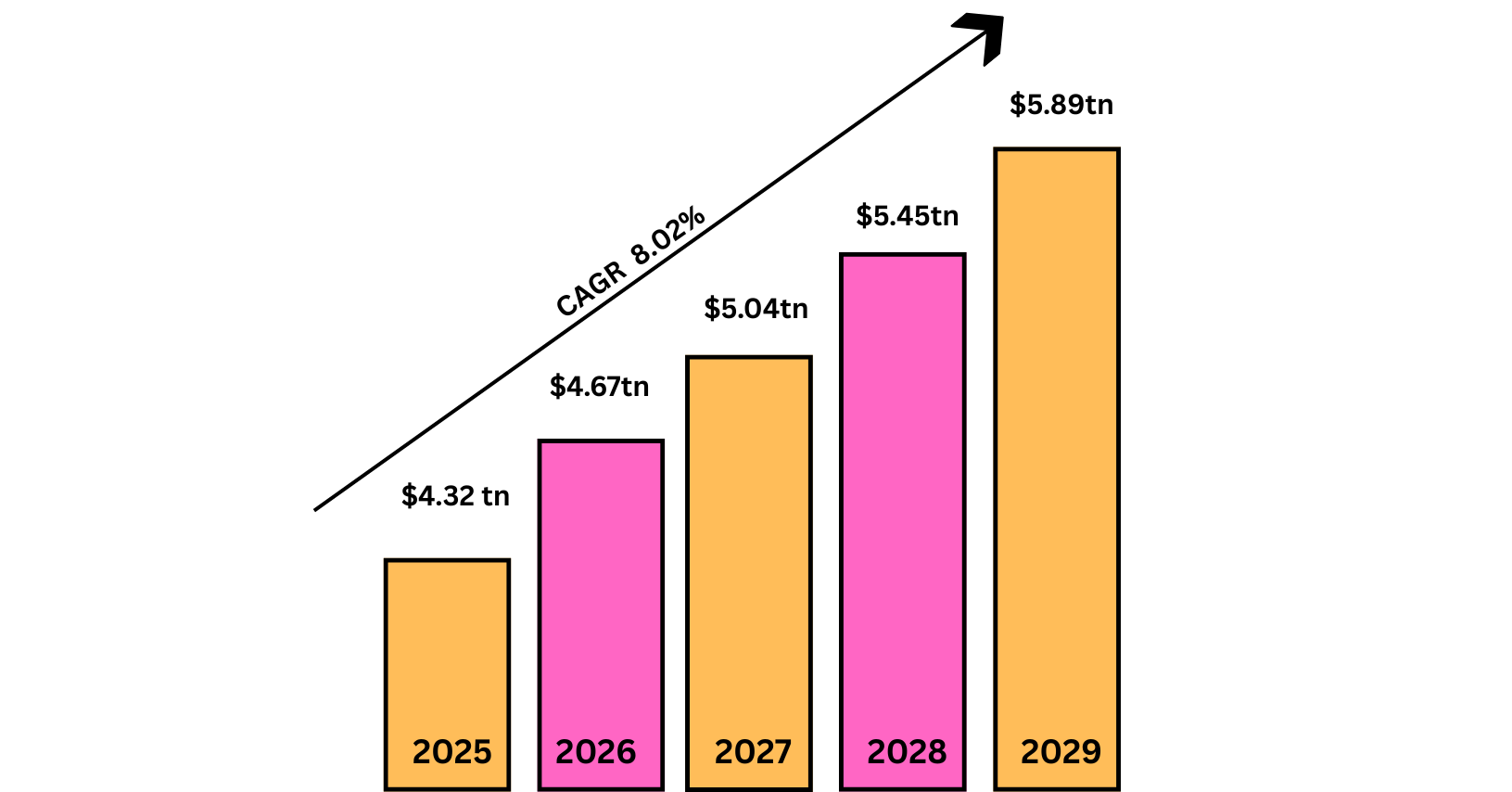
As per a report by Statista, the total revenue of eCommerce is projected to reach $4.32 trillion by the end of 2025. With a CAGR of 8.02% (2025-2029), the revenue is expected to reach $5.89 trillion by 2029.
Types of eCommerce Models and Their Estimated Platform Development Costs
[1] Business to Consumer (B2C)
In the B2C model, companies sell products or services directly to individual customers. This includes retail shops, online shopping websites, digital service providers, and more. In B2C, the focus is on customer satisfaction, rapid service, and competitive pricing. Companies invest significantly in marketing, user experience, and customer support to lure and keep consumers. Since B2C targets a broad audience, the strategy is usually very visual, engaging, and user-friendly.
Cost of App: $2,000 to $50,000 or more, depending on factors such as factors like website creation, inventory, branding, advertising, and logistics.
[2] Consumer to Business (B2B)
The C2B model enables individual consumers to provide services, products, or content to businesses. Unlike traditional models, where businesses initiate transactions, in this model, it is the consumer who supplies or creates something that businesses require. For example, skilled individuals like photographers, designers, or writers might offer their expertise to companies via freelance platforms. Additionally, customer feedback or survey participation falls under C2B when businesses utilize this information to enhance their products.
Cost: Establishing a C2B offering as an individual could involve costs between $100 and $2,000, which covers costs of equipment, certifications, portfolio development, or digital tools.
[3] Business to Business (B2B)
The B2B model enables transactions between two companies rather than between a business and individual consumers. One firm provides goods or services that help another’s operations; for example, a manufacturer delivering raw materials to a producer or a software company providing enterprise solutions to large companies. These partnerships tend to be long-term and are contract-based, emphasizing value, efficiency, and trust. The sales cycles in B2B are usually longer, and transactions are larger in scale compared to B2C models.
Cost: $5,000 to $100,000, depending on the industry, product creation, sales framework, and compliance needs.
[4] Consumer to Consumer (C2C)
In C2C, there are direct exchanges between consumers, typically enabled by a third-party online platform. These platforms create environments where individuals can sell, buy, or trade goods and services, such as used electronics, handmade crafts, or personal tutoring. The C2C model depends on community trust and the reliability of the platform. It enables everyday people to sell without needing formal business structures, making it very accessible and low-risk.
Cost: $0 to $500, which may include listing fees, optional advertising, packaging supplies, or transaction fees on platforms.
[5] Business to Administration (B2A)
B2A refers to the exchange of products or services from businesses to government bodies or public administration. This includes sectors like IT services, legal assistance, infrastructure development, etc. Governments frequently contract businesses to carry out projects or functions to enhance efficiency or reduce expenses. Operating in the B2A sector requires strict compliance with government rules, bidding processes, and regulatory standards.
Cost: $10,000 and $200,000, accounting for licenses, governmental registration, compliance documentation, tendering expenses, and specialized staffing.
[6] Consumer to Administration (C2A)
The C2A model is where individuals engage with digital platforms to access public services offered by the government. This includes tasks like paying taxes online, applying for a driver’s license, or retrieving healthcare records. Governments adopt digital strategies to facilitate better access to services and enhance transparency for citizens. C2A minimizes paperwork, reduces processing time, and streamlines administrative processes for the public.
Cost: Users might pay between $0 and $100 in service or application fees, depending on the specific service involved.
Factors Affecting eCommerce App Development Costs
[1] App Features and Complexity
The number of features included in your eCommerce app directly affects the time and resources required for development. A basic application with essential features like user authentication, product catalog, and shopping cart may range from $10,000 to $30,000. However, if you’re looking for advanced functionalities such as real-time tracking, AI-driven recommendations, or multi-vendor capabilities, costs can exceed $50,000. In simple terms, increased app complexity leads to higher costs.
[2] Selecting Business Model
The choice of business model significantly influences the overall cost. For example, a single-vendor store, which is similar to a small eCommerce site, is more straightforward and less expensive to develop, typically costing between $5,000 and $20,000. However, opting for a marketplace model similar to Amazon or Flipkart requires additional features such as seller dashboards and commission settings, potentially raising costs to $50,000 or above.
[3] Platform Selection
The choice of whether to build your app for iOS, Android, or both is crucial. Developing for a single platform is less expensive, generally falling between $10,000 and $25,000. However, if you aim to include users on both platforms, you may have to either increase your resources and costs or utilize a cross-platform solution such as Flutter or React Native, which could range from $20,000 to $40,000. More platforms lead to increased time and expenses.
[4] Development Team Size and Location
The choice of your development team and their geographical location can greatly impact costs. Hiring a freelancer or a small team from regions like India or Malaysia may cost anywhere from $20 to $50 per hour, while companies in the US or the UK could charge between $70 and $100 per hour. A complete team, including developers, designers, testers, etc, typically costs around $30,000 and can exceed $100,000, depending on size and expertise.
[5] Technology Stack Selected
The selection of tools and technologies for building your app also affects costs. Utilizing open-source or widely-used frameworks can help keep expenses lower, while more advanced or custom technologies may increase the final cost. For example, a basic technology stack might range from $10,000 to $25,000, but opting for scalable, cloud-based, or AI-integrated stacks can easily increase the costs to over $50,000. Always find the right balance between performance, scalability, and your budget.
[6] UI/UX Design Complexity
A simple and elegant design is not only visually appealing but also cost-effective, typically costing around $5,000 to $10,000. However, if you desire a captivating, custom-branded interface complete with animations, detailed product presentations, and an exceptional user experience, you might have to spend between $15,000 and $30,000 or more. A well-designed interface ensures user satisfaction, but as the complexity of the design increases, so does the cost.
Cost to Develop Various Panels and Their Features
[1] Admin Panel
The Admin Panel acts as the control hub for the entire application or platform. It enables the owner or backend team to oversee users, vendors, products, reports, and other functionalities. Given its extensive control, it must be strong, secure, and user-friendly. Typically, developing an admin panel costs between $8,000 and $15,000, depending on the complexity of the features.
- User Management: Lets administrators add, remove, or block users and vendors, ensuring platform safety and overseeing user interaction. Cost: $600.
- Dashboard Overview: Provides a summary of total users, sales, orders, vendors, and performance metrics, offering an overview of the platform’s status. Cost: $700.
- Order Management: Enables the admin to oversee all incoming and outgoing orders, valuable for resolving customer complaints or disputes. Cost: $800.
- Product Listing Control: Allows admins to approve or delete products submitted by vendors, ensuring high-quality items are sold. Cost: $700
- Commission and Revenue Settings: Enables setting or updating commission rates for the platform, crucial for monetization. Cost: $600.
- Reports and Analytics: Create sales reports, customer data, and vendor performance metrics, aiding in informed decision-making. Cost: $1,000.
- Notification Management: Sends notifications to users and vendors regarding orders, promotions, or policy updates. Cost: $400.
- CMS (Content Management System): Used for updating static pages like About, FAQ, and Terms, ensuring content is current. Cost: $800
- Payment & Refund Monitoring: Monitors payment-related issues or refunds initiated by users or vendors, ensuring transparent financial practices. Cost: $800.
- Multi-admin Roles & Permissions: Supports multiple admins with varied access levels, efficient for larger teams. Cost: $600.
- Dispute & Support Handling: Manages user complaints or refund requests, helping maintain trust and the platform’s reputation. Cost: $850.
- Security Logs & Activity Tracker: Monitors user logins, changes made to the admin panel, and alerts for any unusual activity. Cost: $700.
[2] Vendor Panel
The Vendor Panel is made for sellers and service providers, assisting them in managing their listings, tracking orders and earnings, and communicating with customers. It functions like a small dashboard for vendors. Development costs typically range from $6,000 to $12,000, based on app size and features.
- Product Upload & Management: Enables vendors to list, modify, or delete products, facilitating inventory management. Cost: $800.
- Order Dashboard: Displays new, ongoing, and completed orders, keeping operations streamlined. Cost: $700.
- Earnings & Payout Summary: Shows daily and monthly earnings along with past payouts, important for financial monitoring. Cost: $600.
- Inventory Alerts: Notifies vendors when stocks are low or run out, preventing missed sales opportunities. Cost: $550.
- Discount & Offer Tools: Allows vendors to create promotions to attract buyers, enhancing visibility and sales. Cost: $650.
- Customer Chat Support: Permits direct communication between vendors and customers, improving support interactions. Cost: $700.
- Ratings & Reviews Management: Vendors can view and respond to customer feedback, enhancing their credibility. Cost: $500.
- Dispute Resolution Access: Enables vendors to address complaints or process refunds, avoiding penalties or negative feedback. Cost: $600.
- Shipping & Delivery Settings: Let vendors select delivery partners or adjust shipping times, essential for logistics. Cost: $700.
- Vendor Profile Settings: Vendors can update their store name, banner, and address, reinforcing their branding. Cost: $400.
- Sales Performance Analytics: Offers graphs and data on product performance, helping vendors strategize better. Cost: $800.
- Push Notifications: Send alerts for new orders, messages, or platform changes, keeping vendors informed instantly. Cost: $400.
[3] Customer Panel
The Customer Panel is the interface that end-users engage with to browse, purchase, track orders, and communicate with vendors. It should be fast, user-friendly, and secure. The development cost for this panel generally falls between $7,000 and $14,000, influenced by the complexity of the user experience and interface.
- User Registration/Login: Secure sign-up options via email, phone, or social accounts, enabling fast and easy access. Cost: $500.
- Product Search & Filter: Helps users find desired items quickly, enhancing their overall satisfaction. Cost: $800.
- Product Page with Photos & Details: Features clear and appealing product descriptions and images, building trust in purchases. Cost: $700.
- Cart & Wishlist: Allows users to save items for later or track favorites, improving the shopping experience. Cost: $600.
- Secure Checkout & Payments: Integrates payment gateways like Stripe and PayPal, ensuring smooth and secure transactions. Cost: $1,000.
- Order Tracking: Enables users to monitor delivery status in real time, reducing the need for support inquiries. Cost: $700.
- Ratings & Reviews: Allows customers to leave feedback, aiding others in making informed purchasing decisions. Cost: $550.
- Chat/Support with Vendors: Provides a built-in chat for queries before or after purchases, promoting transparency. Cost: $650.
- Push Notifications: Issue alerts regarding sales, order updates, or messages, keeping users engaged. Cost: $400.
- Profile & Address Management: Enables saving delivery details and editing profile information, making repeat purchases easier. Cost: $500.
- Returns & Refund Requests: This feature typically supports customers in initiating returns or refunds for their orders. Cost: $400.
- Loyalty Points or Coupons: Gives loyalty points and discount coupons for exclusive offers to customers. Cost: $650.
Cost to Integrate Emerging Technologies in eCommerce App Development
[1] Artificial Intelligence (AI)
AI enhances eCommerce applications to feel more intelligent and personalized, such as recommending products based on your preferences, providing 24/7 chat support, or efficiently managing inventory. Integrating AI functionalities requires time and skilled developers, particularly if you want features like recommendation engines or intelligent search. It can improve user satisfaction and drive sales. Cost: $8,000 to $25,000, depending upon complexity.
[2] Machine Learning (ML)
Machine Learning is a part of AI but places greater emphasis on data-driven learning, such as forecasting which items a user may purchase next or detecting payment fraud. It is most effective when your application already possesses a large amount of customer data. ML models require training, testing, and fine-tuning, demanding both time and expertise. Cost: $10,000 to $30,000 or more, depending on the data and use cases.
[3] Blockchain
Blockchain enables transparency and security, which is ideal for tasks like tracing product origins, facilitating secure payments, or building customer trust. It’s particularly beneficial for high-value transactions or marketplaces. However, implementing it is neither inexpensive nor straightforward, and not every application requires it. Cost: $15,000 to $40,000, depending on features and integration.
[4] Cloud Technology
Leveraging cloud services enables your application to function seamlessly without the need for physical servers. It offers flexibility, safety, and the ability to scale easily as your user base grows. You pay only for what you use; however, setting it up for an eCommerce platform with sufficient storage, backup solutions, and real-time processing can be costly. Cost: $5,000 to $20,000, depending on usage and provider.
[5] AR / VR / XR
If you want your customers to virtually try on apparel or visualize how sunglasses would look on their face, this is where AR (Augmented Reality), VR (Virtual Reality), or XR (Extended Reality) benefit the users. These technologies create a more engaging and enjoyable shopping experience, but they require specialized developers and content (like 3D models). Cost: $20,000 to $70,000, depending on expertise, platform, and the number of products.
Follow an End-to-End eCommerce Application Development Process
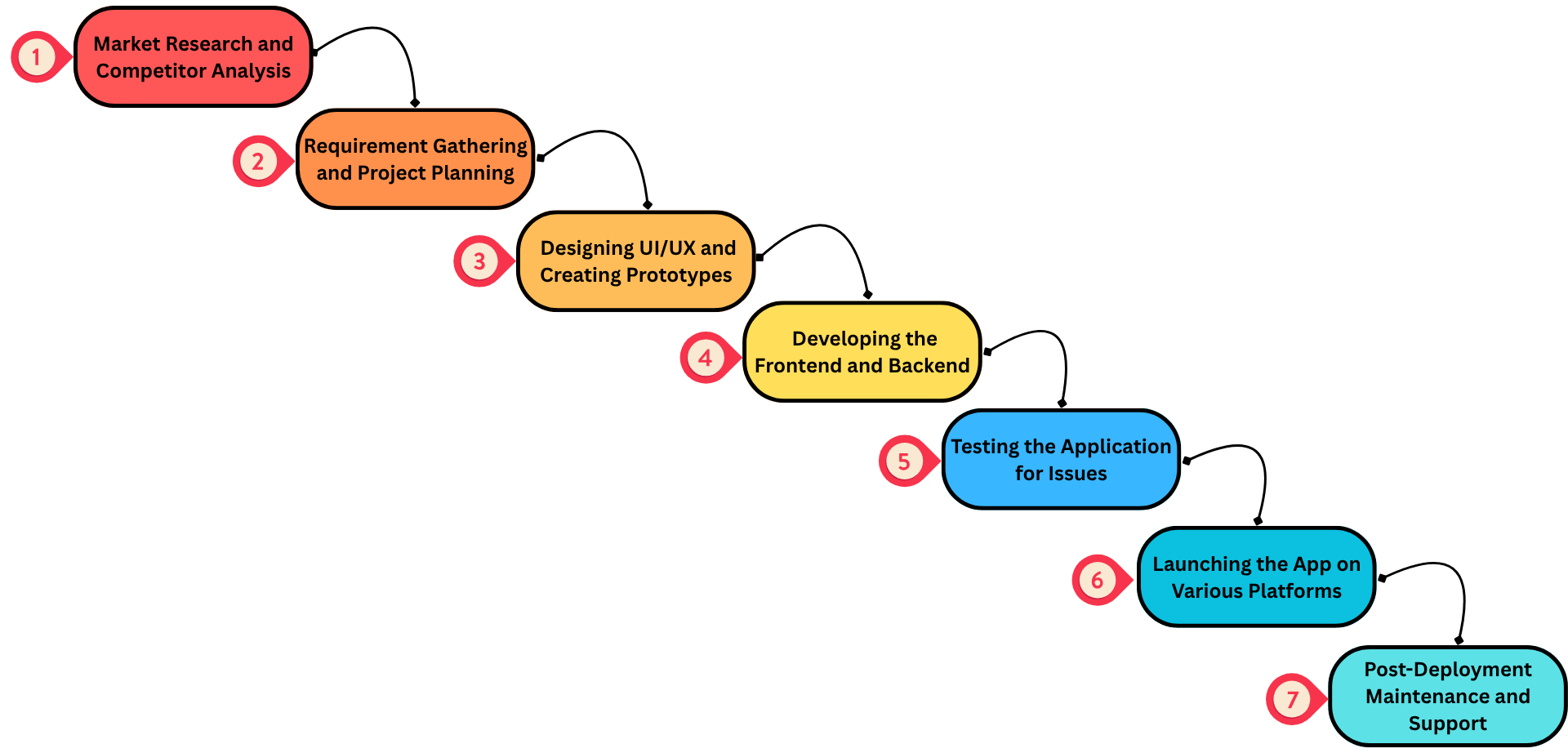
[1] Market Research and Competitor Analysis
Before diving into development, it’s necessary first to grasp the market you’re entering. This involves discovering what your intended audience desires, the challenges they encounter while shopping online, and what equivalent eCommerce apps provide. Analyzing competitors allows you to identify gaps and see potential opportunities. Understanding these aspects helps you create an app that is unique in itself and effectively addresses your customers’ needs. It serves as the groundwork for a successful app.
Cost: $1,000 to $5,000.
[2] Requirement Gathering and Project Planning
After completing your research and analysis, the next step is to collaborate with your development team to outline all the functionalities you want for the app. This includes essential features such as product pages, checkout procedures, wishlists, and payment gateways, along with additional elements like coupon codes, reviews, or live chat. Based on this information, a comprehensive plan is established that details the technology stack, involved team members, timelines, development methodology, and budget forecasts. Thorough planning at this stage helps prevent unexpected issues or delays.
Cost: $2,000 to $8,000.
[3] Designing UI/UX and Creating Prototypes
When the plan is finalized, it’s time to design how your app will appear and operate. UI (User Interface) centers on the visual components such as buttons, colors, and layouts, while UX (User Experience) ensures that users can navigate the app easily without any issues. Designers typically start with wireframes that are similar to blueprints, followed by colorful mockups, and finally interactive prototypes that allow you to navigate the app as if it were functioning. This phase focuses on delivering a seamless and attractive experience for your users.
Cost: $3,000 to $12,000.
[4] Developing the Frontend and Backend
This stage involves the primary development of the app. The frontend consists of everything users engage with, such as browsing products, adding items to the cart, and checking out. The backend manages user data, inventory, orders, payment processes, and more. Developers write the necessary code, set up servers, connect databases, and integrate third-party services such as Stripe or PayPal. Whether developing a mobile app, a web app, or both, this stage can span several weeks or months depending on complexity.
Cost: $10,000 to over $50,000.
[5] Testing the Application for Issues
Even the most well-designed apps can encounter bugs or glitches, so testing is essential. QA (Quality Assurance) professionals examine the app across various devices, browsers, and networks to identify any issues. They analyze functionalities such as logging in and out, payment processing, product searches, and how the app performs under heavy traffic. Security assessments are particularly crucial, especially since the app will handle customer information. A thoroughly tested app is important for a confident launch. Cost: $2,000 to over $9,000.
[6] Launching the App on Various Platforms
Once everything operates smoothly, it’s time to launch the app. When creating a mobile application, you must comply with the app stores’ guidelines, such as Google Play and the Apple App Store, submitting descriptions, screenshots, and other materials. If it’s a website, a setup for hosting and domain registration is needed. You may also opt for a soft launch with a smaller group of users initially to gather feedback before going fully public. A successful launch provides your eCommerce business with a solid first impression.
Cost: $1,000 to $3,000.
[7] Post-Deployment Maintenance and Support
After the launch, your app will require ongoing updates to resolve bugs, enhance features, or adapt to new technologies. You might also want to implement seasonal promotions, introduce new products, or modify the app based on user feedback. Maintenance includes monitoring the server, improving performance, and applying security updates. Having a technical team prepared ensures your app continues to operate smoothly and remains competitive within the market.
Cost: $500 to $2,000 per month.
Complete Technology Stack for eCommerce Application Development
[1] Frontend Development
Languages
- HTML5, CSS3, JavaScript
Frameworks/Libraries:
- React.js / Vue.js / Angular
- Redux / Zustand / Vuex
- Tailwind CSS / Bootstrap / Material UI
Tools:
- Webpack / Vite
- ESLint, Prettier
[2] Backend Development
Languages
- JavaScript (Node.js), Python, Java, PHP, Ruby
Frameworks:
- Node.js with Express.js (JavaScript)
- Django / Flask (Python)
- Spring Boot (Java)
- Laravel (PHP)
- Ruby on Rails (Ruby)
Authentication:
- JWT (JSON Web Tokens)
- OAuth 2.0
- Passport.js / Firebase Auth / Auth0
[3] Databases
Relational DB:
- PostgreSQL
- MySQL / MariaDB
NoSQL:
- MongoDB
- Redis
Search Engine:
- Elasticsearch (for advanced product search)
[4] eCommerce Specific Features
Payment Gateway Integration: Stripe / PayPal / Razorpay / Square
Shopping Cart Logic: Custom or library
Product Management: CRUD, categories, variants
Order & Inventory Management
- Shipping Integration: Shippo, EasyPost, FedEx APIs
- Tax Calculation APIs: Avalara, TaxJar
[5] Hosting & DevOps
Cloud Providers: AWS / Google Cloud / Azure / DigitalOcean
Containerization: Docker
Orchestration: Kubernetes / Docker Compose (smaller scale)
CI/CD: GitHub Actions / GitLab CI / Jenkins / CircleCI
[6] Security
- HTTPS (SSL Certificate)
- Content Security Policy (CSP)
- Rate Limiting & Throttling
- XSS / CSRF Protection
- Two-Factor Authentication (2FA)
Tips to Optimize eCommerce App Development Cost
[1] Have a Clear Project Plan
Before starting development, it’s crucial to clearly define your objectives. Write down the essential features your app must possess, and be practical regarding your budget. Having a well-defined plan prevents unforeseen issues later and keeps the project moving smoothly. When developers understand your expectations from the start, they can perform more efficiently, thereby saving both time and money.
[2] Focus on Core Features
It’s good to want every exciting feature immediately, but this can rapidly increase your costs. Focus instead on the core features and functionalities that are truly necessary for your customers, such as product listings, search functions, cart, and checkout processes. You can always integrate the additional features like AI chatbots or loyalty programs later, once your app is operational and generating revenue.
[3] Select the Right Tech Stack
The technologies and tools you choose to develop your app can significantly impact costs. Opt for those that are dependable, scalable, and have solid community support. If you’re not familiar with technology, consult your developer or team for cost-effective recommendations. Utilizing open-source tools or frameworks can also help you save a considerable amount of time.
[4] Prioritize Cross-Platform Development
Rather than creating individual apps for both iOS and Android, consider leveraging cross-platform development tools like Flutter or React Native. This allows you to write the code once, making it functional on both platforms. It saves time, cuts costs, and eliminates the need for two separate teams for the same task. It’s ideal for businesses looking to speed up development without increasing their budget.
[5] Use Pre-Built or Open-Source Modules
You don’t need to develop everything from scratch. Numerous pre-made templates, plugins, and tools are available to speed up the development process. Whether it’s a payment processing system, user authentication, or product filters, utilizing existing solutions can save you both time and money. Just ensure that these options are secure and reputable.
[6] Test Early
Many ignore the expenses related to testing and future upgrades. Consistent testing guarantees that your app operates efficiently and keeps users satisfied. If issues are ignored, resolving them later can become expensive. Additionally, since technology changes rapidly, you’ll need to timely refresh your app to maintain compatibility and competitiveness. Planning for this from the outset helps prevent unforeseen costs in the future.
How Next Olive Technologies Can Help in Optimizing the eCommerce App Development Cost of Your Project?
Next Olive Technologies can help you in reducing the cost of developing your eCommerce application while maintaining high quality. They achieve this through strategic planning, utilizing ready-made tools, and implementing efficient coding practices that save both time and resources. Rather than creating everything from scratch, they leverage pre-built and reliable modules and features that are already effective, which speeds up the development process. Their knowledgeable team also helps you focus solely on the necessary features for your business, clearing unnecessary extra things that could increase costs. With a defined roadmap, clear pricing, and consistent updates, they ensure you won’t encounter problems throughout the process. Whether you are a new startup or a well-established company, Next Olive provides adaptable and cost-effective solutions to help you launch a robust, user-friendly eCommerce app that aligns with your business objectives while keeping your expenses manageable.
Conclusion
In conclusion, creating an eCommerce application can be a wise decision for your business, but it’s crucial to be aware of the associated costs. The total cost is influenced by factors such as features, design, platform (Android, iOS, or both), and whether you opt for a freelancer, an agency, or an in-house team. Although it may appear to be a significant upfront investment, a well-crafted app can attract more customers, increase sales, and enhance your brand over time. Therefore, take your time, carefully outline your budget, and select the appropriate team to transform your eCommerce app concept into reality.
Frequently asked questions (FAQs)
Next Olive is the leading eCommerce application development company that has over 13 years of experience in the eCommerce sector and over 100 talented and experienced eCommerce app developers. The company has established a strong presence in over 20 different countries, such as the USA, UK, Australia, Canada, Malaysia, Saudi Arabia, UAE, etc.
The time required to develop an eCommerce app depends upon several important factors such as type, size, complexity, and platform of the app.
- Basic App: 2 to 3 Months.
- Medium-Complexity App: 3 to 6 Months.
- Large App: 6 to over 12 Months.
We use Agile methodology for developing the applications as it offers us flexibility and enables us to quickly adapt to changes in the project.

